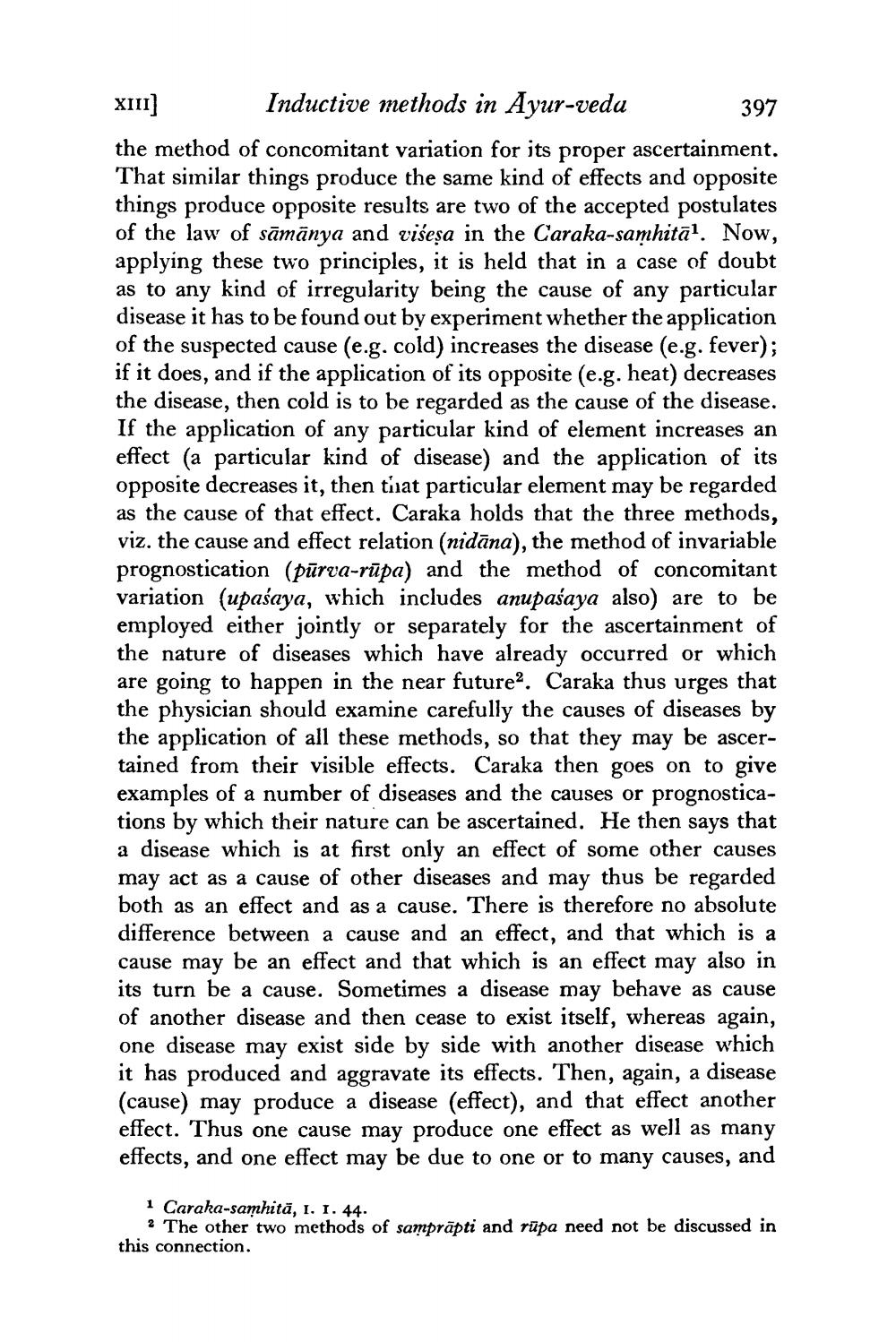________________
XIII]
Inductive methods in Ayur-veda
the method of concomitant variation for its proper ascertainment. That similar things produce the same kind of effects and opposite things produce opposite results are two of the accepted postulates of the law of sāmānya and viśeṣa in the Caraka-samhitā1. Now, applying these two principles, it is held that in a case of doubt as to any kind of irregularity being the cause of any particular disease it has to be found out by experiment whether the application of the suspected cause (e.g. cold) increases the disease (e.g. fever); if it does, and if the application of its opposite (e.g. heat) decreases the disease, then cold is to be regarded as the cause of the disease. If the application of any particular kind of element increases an effect (a particular kind of disease) and the application of its opposite decreases it, then that particular element may be regarded as the cause of that effect. Caraka holds that the three methods, viz. the cause and effect relation (nidāna), the method of invariable prognostication (pūrva-rupa) and the method of concomitant variation (upasaya, which includes anupaśaya also) are to be employed either jointly or separately for the ascertainment of the nature of diseases which have already occurred or which are going to happen in the near future2. Caraka thus urges that the physician should examine carefully the causes of diseases by the application of all these methods, so that they may be ascertained from their visible effects. Caraka then goes on to give examples of a number of diseases and the causes or prognostications by which their nature can be ascertained. He then says that a disease which is at first only an effect of some other causes may act as a cause of other diseases and may thus be regarded both as an effect and as a cause. There is therefore no absolute difference between a cause and an effect, and that which is a cause may be an effect and that which is an effect may also in its turn be a cause. Sometimes a disease may behave as cause of another disease and then cease to exist itself, whereas again, one disease may exist side by side with another disease which it has produced and aggravate its effects. Then, again, a disease (cause) may produce a disease (effect), and that effect another effect. Thus one cause may produce one effect as well as many effects, and one effect may be due to one or to many causes, and
397
1 Caraka-samhita, I. 1. 44.
2 The other two methods of samprapti and rupa need not be discussed in this connection.




